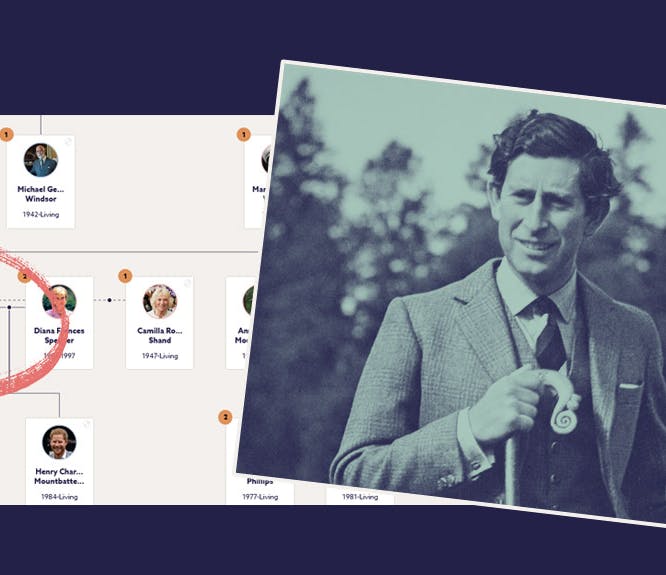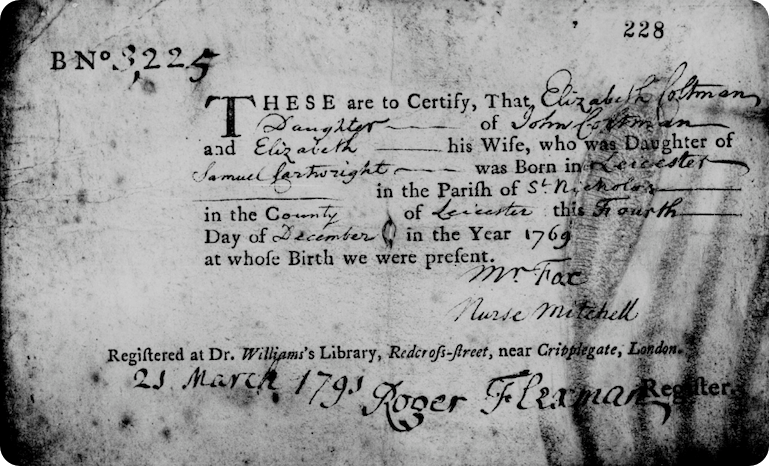Inspirational women from history: slavery abolitionist Elizabeth Heyrick
4-5 minute read
By Daisy Goddard | March 12, 2024
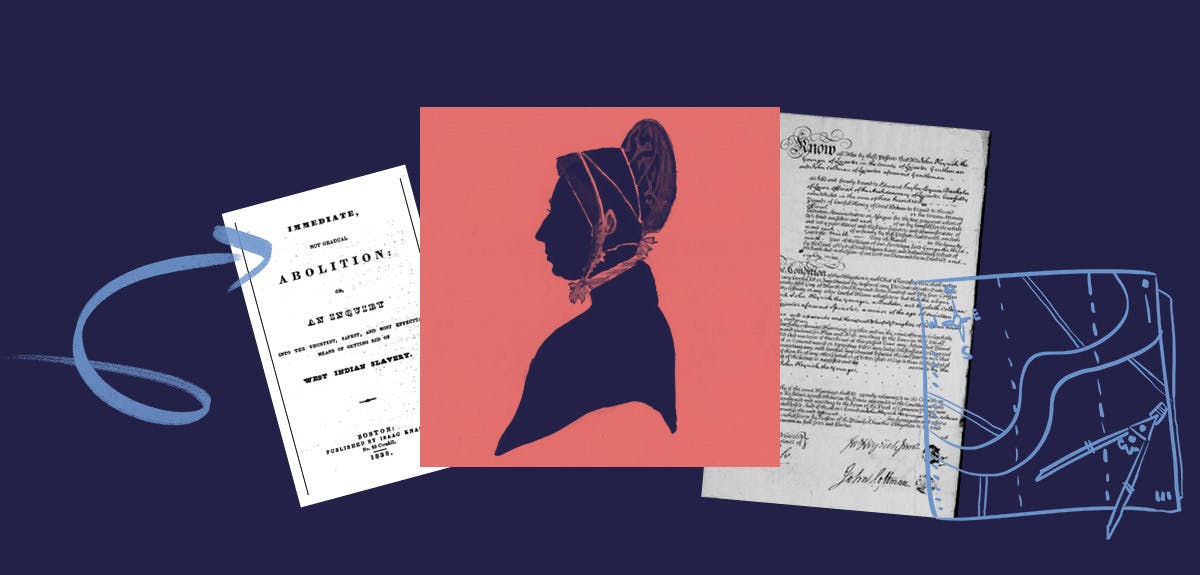
Despite her important activism, Elizabeth Heyrick doesn’t receive the attention that she deserves today. Discover more about this influential figure today.
In the 18th and 19th centuries, Elizabeth Heyrick fought for everything from higher wages to the immediate abolition of slavery. She earned a reputation as one of the most outspoken philanthropists of the day, with her writings influencing future generations of activists.
As part of our mission to rediscover the lives of women that have been lost to history, we’re sharing her story. But we need your help.
Discover five inspirational yet overlooked women via our Herstory Hub, and vote for who you feel deserves to be commemorated with their very own plaque in 2024. If Heyrick’s radical campaigning has struck a chord with you, you select her name in the poll here, or simply vote at the bottom of this page.
Elizabeth Heyrick’s roots
Elizabeth was born Elizabeth Coltman on 4 December 1769. She was from a successful family - her mother Elizabeth Cartwright Coltman was a poet and writer, who had worked as a publishers’ editor and book reviewer. Her father John, a Unitarian Christian, was a worsted cloth manufacturer.
As our parish records reveal, Elizabeth was baptised at St Nicholas’ parish in Leicester in 1769.
Elizabeth shows up in our records again aged 20. On 10 March 1789, she married John Heyrick in the same parish that she was baptised.
Her husband John was a lawyer, descended from the 17th century poet Robert Herrick. Their marriage was sadly cut short when John died in 1797, aged 35. As his burial record indicates, he was serving as a Lieutenant in the 15th or Kings Regiment of Light Dragoons.
Fighting for an immediate end to slavery
After her husband’s death, the 28-year-old Elizabeth turned to religion. She converted from methodism to the Society of Friends, becoming a Quaker. She became involved with the fight against slavery within England’s religious community.
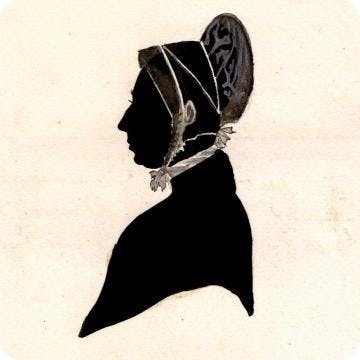
Elizabeth Heyrick.
Many of Elizabeth's contemporaries wanted to end slavery gradually, arguing that small steps were more realistic goals. Leading figures in the British abolition movement – including William Wilberforce and Thomas Foxwell Buxton – took this stance. These two men founded the Society for the Mitigation and Gradual Abolition of Slavery in 1823.
The Slave Trade Act of 1807 made the slave trade illegal within the British Empire, yet it brought no change to the conditions that enslaved people had to endure. Along with other Quaker reformers like Thomas Sturge, Elizabeth Heyrick saw the lack of progress and rejected the gradualist approach.
She stood for the immediate abolition of slavery, outlining her arguments in the 1824 pamphlet ‘Immediate, not gradual abolition, or, An inquiry into the shortest, safest, and most effectual means of getting rid of West Indian slavery.’
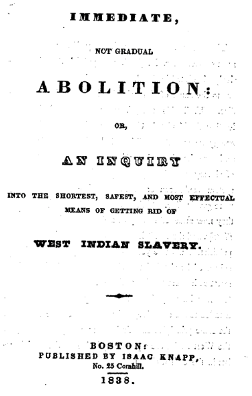
Heyrick's 1824 pamphlet.
This work was influential in rallying the outcry against slavery in Britain. It even had an impact overseas, being republished in the United States in the 1830s.
But her efforts didn’t stop there. She was a firm believer in deeds, not just words. She organised a social movement to boycott sugar from the West Indies, visiting shops in her local area of Leicester and compelling traders not to stock sugar produced with slave labour.
In 1825, Heyrick founded the first ever anti-slavery ladies society in the world, the Birmingham Ladies Society for the Relief of Negro Slaves.
A tireless reformer
Heyrick’s reforming spirit wasn’t confined to just the struggle against slavery. Over her career, she was also involved in workers’ rights and relief. She sat on the Committee for the Society for the Relief of Indigent Old Age in 1829.
She was also concerned with the welfare of long-term prisoners and volunteered as a prison visitor throughout her life. Her charitable causes included everything from wages and electoral reform to capital punishment and bullfighting.
‘The pen of a woman’: Elizabeth Heyrick’s legacy
Elizabeth died on 18 October 1831, just two years before the Slavery Abolition Act of 1833. She is buried in Leicester’s non-conformist cemetery.
Although she didn’t live to see the fruits of her labour fully realised, her work lived on and inspired countless others fighting against systemic global issues.
On 1 June 1853, the British Banner described the impact of her writing:
"Mrs Elizabeth Heyrick boldly sent forth the thrilling tract which taught the abolitionists of Great Britain this lesson of justice and truth, and we honour her memory for her deeds. We are indebted to the pen of a woman for pleading yet more powerfully the cause of justice to the slave."
Shortly after her death, a writer to the Leicester Chronicle eulogised her, describing how they had ‘never known an individual more pure in morality and more ardent in charity’.
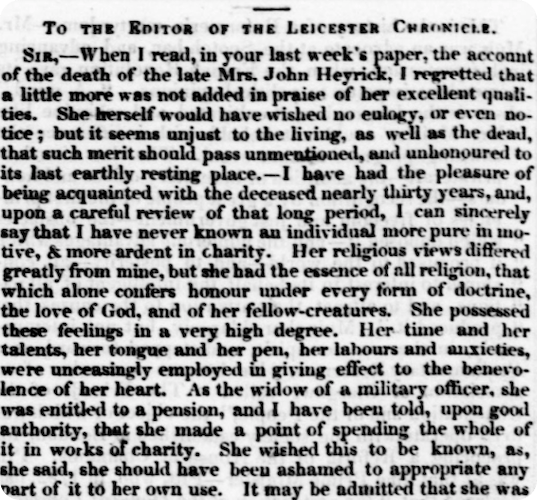
A dedication to Elizabeth Heyrick in the Leicester Chronicle.
Although ‘she herself would have wished no eulogy’, she was remembered as a dedicated fighter for the voiceless in society. ‘Her time and her talents, her tongue and her pen, her labours and anxieties, were unceasingly employed in giving effect to the benevolence of her heart’.
Tell her story with Findmypast
We’re on a mission to ensure women like Elizabeth aren’t forgotten by history. She’s one of five women we’ve shortlisted in our poll – vote now, and later this year, the winner will be commemorated with a special plaque.
Be sure to head over to our Herstory Hub to learn more about these five inspirational women today.
Related articles recommended for you

Here's how to overcome nine common house history research challenges: our expert's top tips
Help Hub
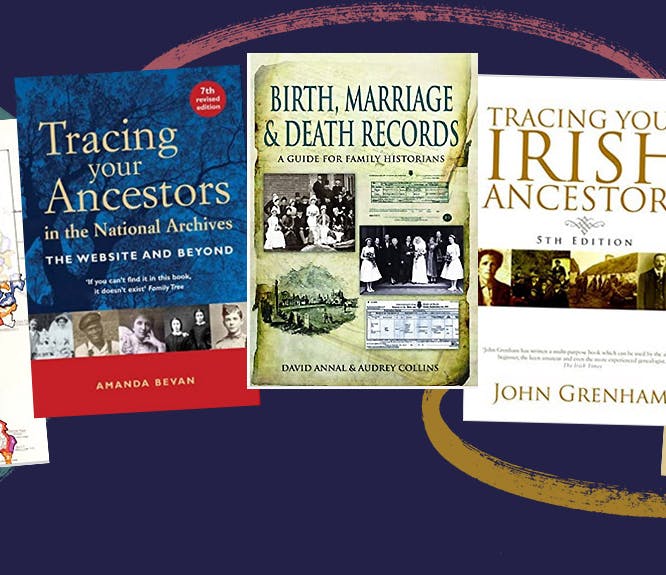
Five family history books for getting started in genealogy: our experts' recommendations
Help Hub
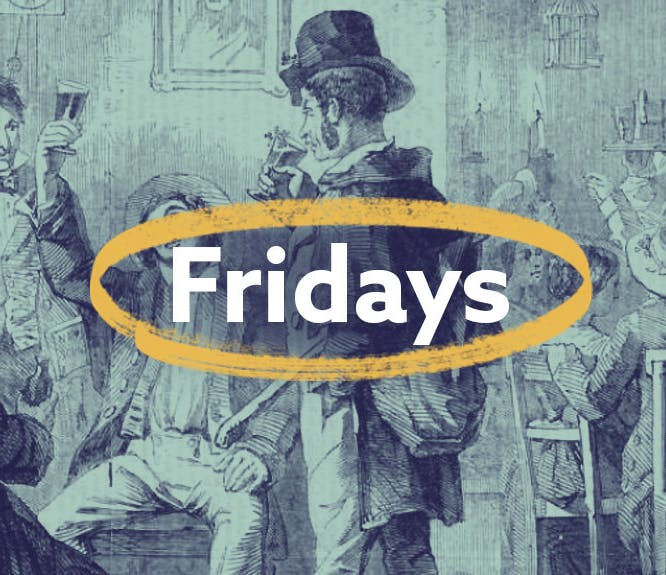
Celebrating Irish stories with almost a million new records
What's New?
